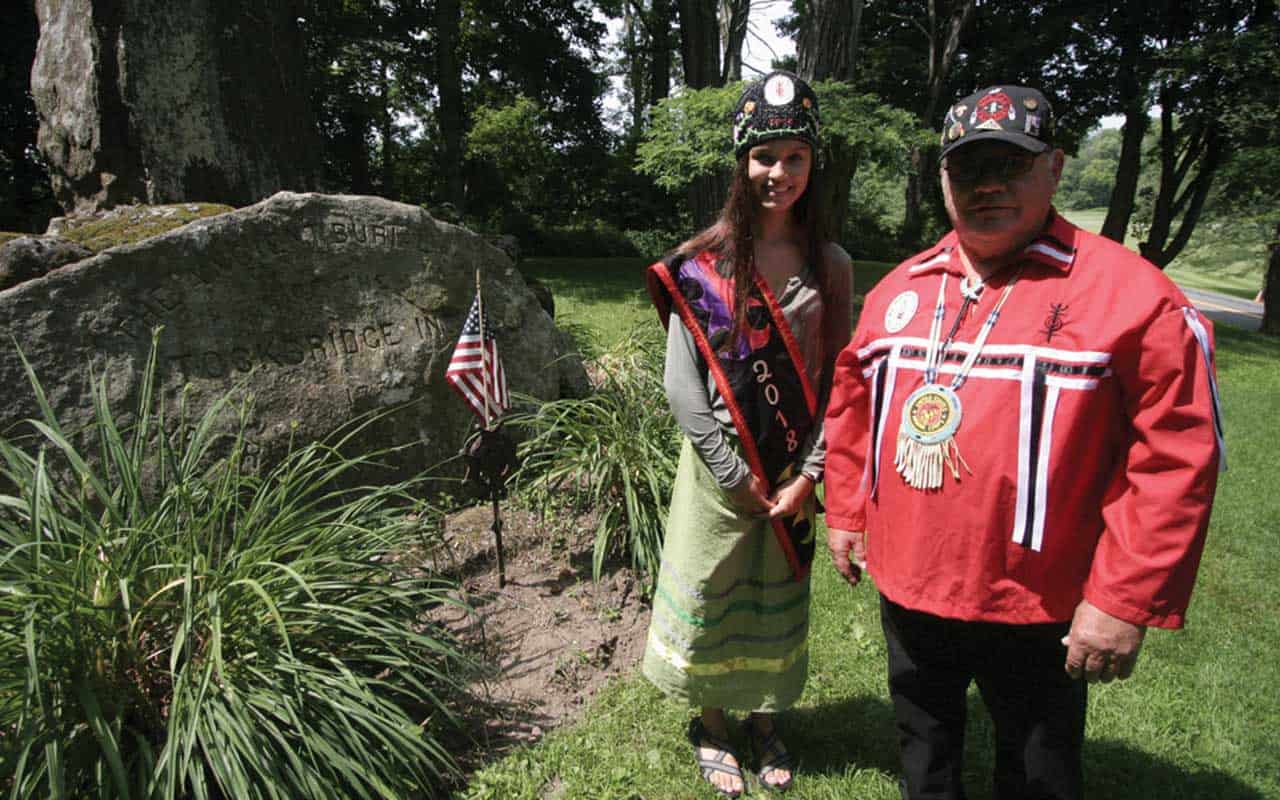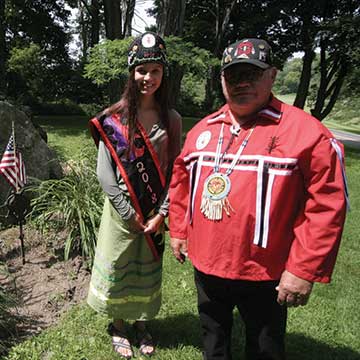This Month’s Featured Article

Housatonic Heritage
 History runs through this region. It follows the Housatonic River as it flows through the towns of Litchfield and Berkshire counties. Set out in any direction, and you’re bound to encounter the area’s past. Because of this, in 2006, Congress designated this region as the Upper Housatonic Valley National Heritage Area.
History runs through this region. It follows the Housatonic River as it flows through the towns of Litchfield and Berkshire counties. Set out in any direction, and you’re bound to encounter the area’s past. Because of this, in 2006, Congress designated this region as the Upper Housatonic Valley National Heritage Area.
Designating a National Heritage Area
This designation didn’t happen overnight. It was the result of years of planning, studies, and advocating by organizations and individuals dedicated to preserving the area’s rich history. Executive director Dan Bolognani explains the process, “National Heritage Areas are designated by Congress on the advice of the Department of Interior and the National Park Service, the results of a feasibility study, and the extent to which the area meets three broad criteria: it possesses themes of national importance; it enjoys broad public support; and it has a management entity that is ready and able to interface with the National Park Service, receive funds, execute the management and interpretative plan for the area, sign contracts, comply with regulations, and track activity.”
The non-profit organization Housatonic Heritage was incorporated in 2001 to act as the management entity of the program. However, it would be several more years before Congress took action to designate the region as a National Heritage Area. “Much of my work ensures compliance. We are working with taxpayer money, which means strict compliance with applicable laws and regulations, and that’s something we take very seriously. That might not sound that fun,” chuckles Bolognani. “But what is fun is interacting with all the organizations and people in this area working to preserve the area’s legacy and connect it to the present.”
Historical themes
As part of its work as a National Heritage Area, Housatonic Heritage explores four historical themes of the 29 towns of northwestern
Litchfield and southwestern Berkshire counties:
• Creating a Cultural Center explores and celebrates the history of the area’s literary, visual, and performing arts and links that history to artistic expressions in the region today.
• Connections to the Land examines the extractive land use and usurpation of land from the area’s Native Americans and connects that past to current efforts to restore land and the Housatonic River.
• Cradle of Industry documents the area’s former manufacturing prowess in iron, wool, paper, and electricity generation.
• Pursuit of Freedom and Liberty delves into the steps toward – and away from – personal and political freedom, religious tolerance, enfranchisement, and civil rights.
Housatonic Heritage entertains ideas, proposals, and collaborations from individuals and organizations that explore these themes through three lenses. “When we consider proposals, we filter through three interpretive goals. The first is to embrace digital communication to share ideas and present information. The next is to engage youth and young adults. Last, to increase and widen the audience for our shared heritage. Our overarching purpose is to broaden engagement in our area’s history and explore themes and methods that will enlarge that appeal.”
Clinton Church Restoration project
One way Housatonic Heritage partners with local organizations is as an incubator, helping guide an idea from conception to birth. “We serve as fiscal agent for several heritage programs and act as their 501(c)3 as they grow and become a non-profit entity. We perform the back-office tasks, receive grants, and do their bookkeeping and donor tracking to help get organizations on their feet and running.”
An example of this kind of partnership is the Clinton Church Restoration (CCR) in Great Barrington, MA. This fledgling organization is restoring the historic Clinton A.M.E. Zion Church to serve as an African American heritage site and cultural center. This church was the epicenter of Black life in the southern Berkshire community for nearly 130 years. Constructed in 1886 by The A.M.E. Zion Society, it profoundly influenced Great Barrington native W.E.B. Du Bois, possesses architectural significance, and appears on the National Register of Historic Places.
For Bolognani, the church’s rebirth as a cultural and interpretive center represents a substantial advancement of nearly two decades of work with a large helping of serendipity thrown in. “Seventeen years ago, Housatonic Heritage began a partnership to create the Upper Housatonic Valley African American Heritage Trail. It included plans for an interpretative center that we had no site for. At the time, A.M.E. Zion Church was still a functioning house of worship. Now, all those years and moving parts later with the work of CCR, we will have a robust program partner and the real possibility of creating an interpretive hub for the 48 sites on the Trail,” explains a grateful Bolognani.
Youth get historical
“Engaging youth in heritage through projects, internships, video production, and social media is critical to what we do. These skill-building endeavors are the vehicles to students’ a-ha moment with history,” describes Bolognani. Young voices and feedback “are very revealing about how they see the work we do. Exploring themes such as our industrial past and topics involving Native and African American and Black history might lead us to other interests and avenues we might not have considered.”
An example of this youth-centered engagement is the student internship collaboration between Housatonic Heritage, the Housatonic Heritage Oral History Center at Berkshire Community College, and the Social Studies department and Career Experience Program at Housatonic Valley Regional High School.
Using recordings and transcripts from student interviews with alumni generated in Social Studies teacher Peter Vermilyea’s classes, interns create a podcast exploring common themes exposed in the conversations. According to Vermilyea, “Students in ECE United States History learn to use the tools of the historian, which includes using oral history to interact with the past. Oral history is a powerful way of making history more relevant to students. In our project, students interview Housatonic graduates from a particular decade about the experience as high school students and in the broader Region One community. By doing so, today’s students learn how to sift through different perspectives on events to construct a richer, more nuanced view of the past.”
Interns labor under the careful guidance and mentorship of Judith Monachina, director of the Oral History Center (see related article on page 37), and with coordination and support by Mary O’Neill, career experience coordinator (also the author of this article). They work independently to identify podcast themes, craft a narrative to bridge interview excerpts, perform additional historical research, learn the audio platform to create the podcast, and record the podcast for wider enjoyment.
Recent interns explored historical themes of the 50s, 60s, and 70s through local events and school culture during those decades. Bolognani comments, “The internship provides the perfect opportunity for Housatonic Heritage to interface with students. It challenges these young people with a variety of heritage-related projects grounded in our rich historical context and introduces students to a broad range of topics and tasks.”
As far as linking the internship to career readiness, O’Neill observes, “This internship collaboration represents the best of education: authentic learning grounded in real-world experience; student accountability with caring adult support; intergenerational interaction; course content with a sense of place; and curriculum (in this case 20th century history) brought to life.”
For past intern Abby Adam, the internship has been influential in her aspirations for a career in history. Now a junior at Gettysburg College, she is majoring in history with a public history minor. This past summer, she interned once again with Monachina, this time at the Oral History Center, providing a fresh perspective on how oral history is conveyed and handed down for future generations.
Broad-based support
Bolognani is mindful of his historical base. “Funded largely from taxpayer funds, we respect the wishes of the people we serve, so broad-based support for a project or program is critical.” To help build that wider support Bolognani explains, “We want to help historical-based organizations cast a wider net to develop audiences that they may not have thought of or had the resources to pursue.”
But developing those resources takes resources, and while Housatonic Heritage is partially government-funded, it must also raise a local dollar for every federal dollar it receives. This local skin in the game represents our area’s own investment in unearthing, interpreting, documenting, and adding diverse voices to our shared history.
There are important stories to tell along roads and byways bordering the Housatonic River, and Housatonic Heritage is at the intersection of many of them. •
For more information about the Housatonic Heritage and the Upper Housatonic National Heritage Area, visit www.housatonicheritage.org.


